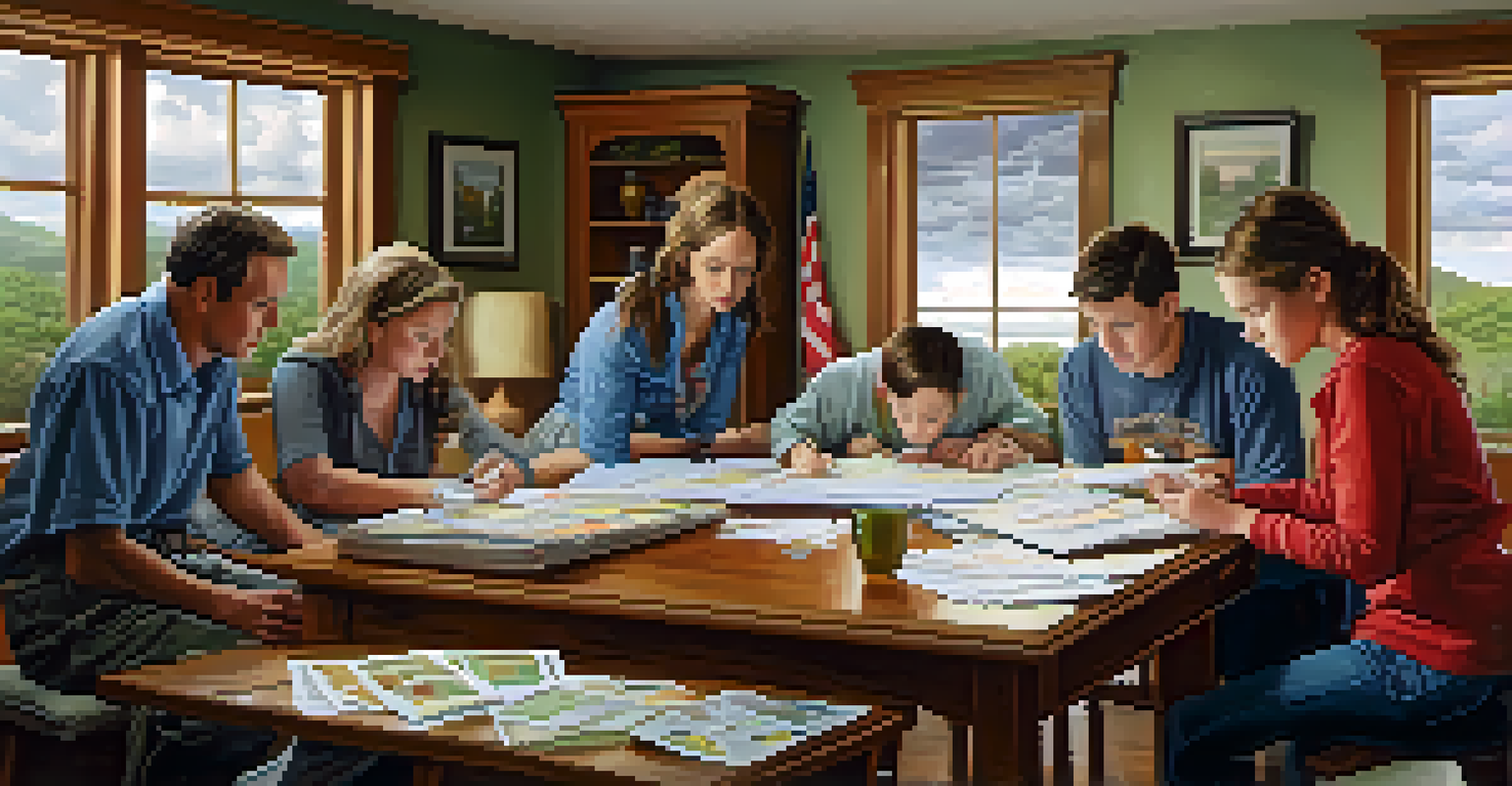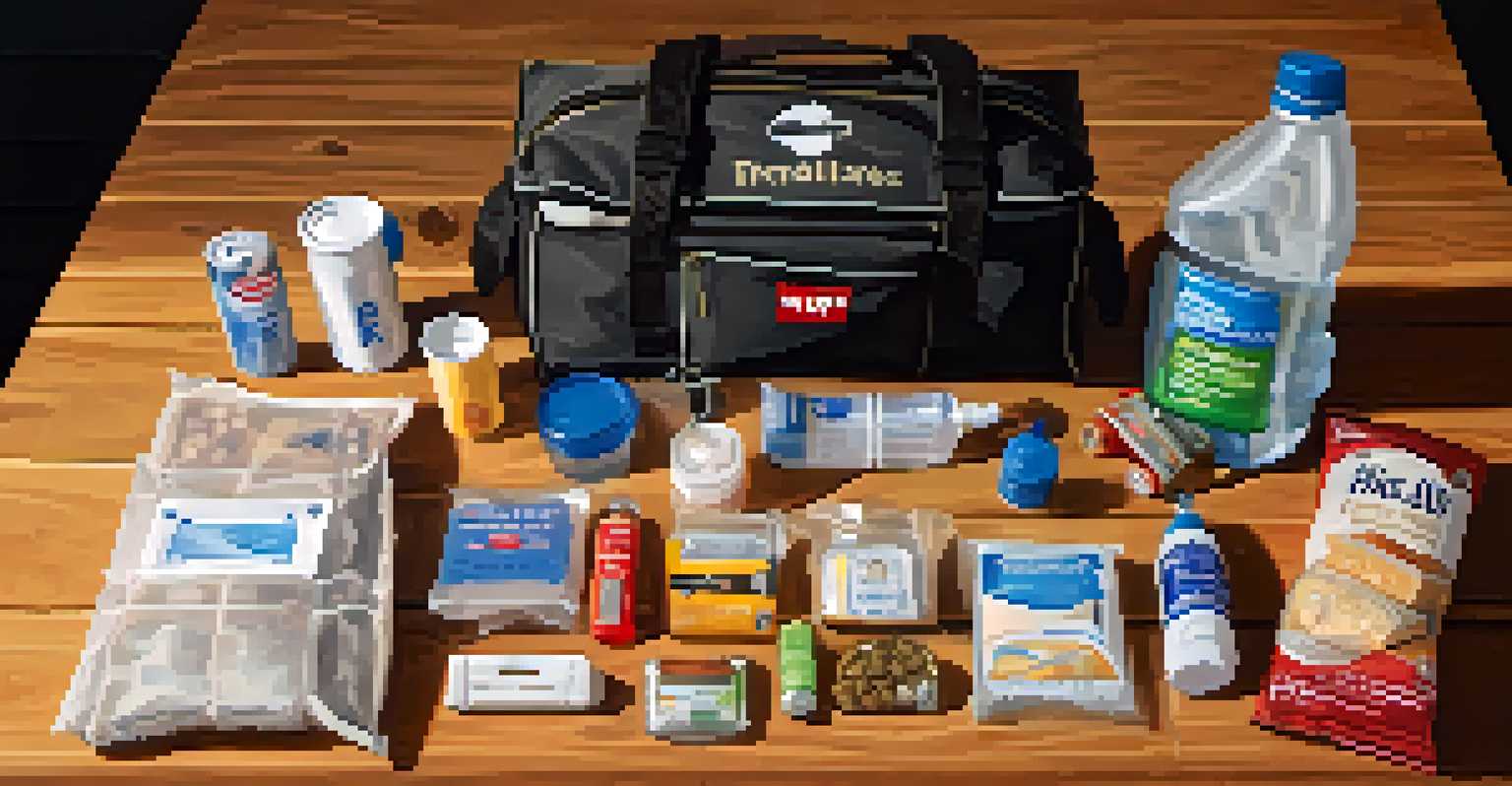How to Conduct a Disaster Risk Assessment for Your Home

Understanding the Importance of Disaster Risk Assessment
Disaster risk assessments are crucial for safeguarding your home and loved ones. By identifying potential hazards, you can better prepare for unexpected events, from natural disasters to man-made incidents. This proactive approach not only helps in minimizing damage but also provides peace of mind knowing you’ve taken steps to protect your family.
By failing to prepare, you are preparing to fail.
Imagine preparing for a storm by stocking up on essentials and securing windows. That’s the essence of a disaster risk assessment—anticipating risks and taking action before disaster strikes. It’s about creating a safety net that can help you bounce back more quickly when life throws a curveball.
Ultimately, understanding the significance of this assessment can motivate you to take the necessary steps. With climate change and urban development, the risks are evolving, making it essential to stay informed and prepared for whatever may come your way.
Identifying Potential Hazards Around Your Home
The first step in your disaster risk assessment is identifying potential hazards in your area. These can range from natural disasters like floods or earthquakes to human-made risks like industrial accidents. Start by researching your local environment and understanding the specific risks that may be prevalent in your region.

For example, if you live in a coastal area, hurricanes might be a significant concern. Conversely, those in earthquake-prone regions should focus on seismic safety measures. By pinpointing these hazards, you’re laying the groundwork for a thorough risk assessment tailored to your unique situation.
Identify Hazards for Better Safety
Recognizing potential hazards in your area is the first step to effectively prepare for disasters.
Additionally, don't forget to consider less obvious risks, such as fire hazards or power outages. Taking a comprehensive view will help ensure that no stone is left unturned in your quest for a safer home.
Assessing Vulnerabilities in Your Home Structure
Once you've identified potential hazards, the next step is to assess the vulnerabilities of your home. Walk through each room and examine the structure, looking for weaknesses that could exacerbate the impact of a disaster. Pay attention to the foundation, roof, and any areas prone to flooding or wind damage.
It’s not the strongest of the species that survive, nor the most intelligent, but the one most responsive to change.
For instance, if your home has large windows or doors facing a known storm path, consider reinforcing them with storm shutters. Similarly, if your basement is prone to flooding, you might want to install a sump pump to mitigate water damage. Making these assessments can help you prioritize which vulnerabilities need immediate attention.
Remember, no home is immune to risk, but understanding where your weaknesses lie can empower you to take corrective action. This proactive mindset can make a substantial difference in how your home withstands a disaster.
Creating an Emergency Preparedness Plan
After identifying hazards and vulnerabilities, it’s time to create an emergency preparedness plan. This plan should outline what to do before, during, and after a disaster. Consider factors like evacuation routes, communication strategies, and meeting points for family members in case of separation.
For instance, you might designate a nearby relative’s home as a safe haven or choose a local park as a meeting spot. Having a clear plan will help reduce panic and confusion in stressful situations. It’s like having a roadmap for your family’s safety during a storm.
Create a Solid Emergency Plan
An emergency preparedness plan outlines essential actions to take before, during, and after a disaster, ensuring family safety.
Additionally, ensure that every family member is familiar with the plan and knows their roles. Regularly practice drills to keep everyone prepared and confident in executing the plan when it matters most.
Stocking Up on Emergency Supplies
A key component of disaster preparedness is having the right emergency supplies on hand. This includes essentials like food, water, first aid kits, and flashlights. It’s important to store enough supplies to last at least three days, as emergency services may not be immediately available.
Think of this as your home’s survival kit. Just as you wouldn’t head out on a long road trip without fuel and snacks, you shouldn’t wait until a disaster strikes to gather your supplies. Regularly check and replenish your stock to ensure everything is fresh and functional.
Moreover, consider any specific needs of your family members, such as medications or baby supplies. Tailoring your emergency kit to your family’s unique needs will ensure that everyone is taken care of in times of crisis.
Staying Informed About Local Emergency Services
Staying informed about local emergency services and resources is vital in your disaster risk assessment. Familiarize yourself with local authorities, such as fire departments, police, and emergency management agencies. Knowing who to contact and what resources are available can save precious time during an emergency.
Additionally, keep an eye on local news and weather alerts. In today’s digital age, many apps and services provide real-time updates about impending disasters. It’s like having a personal weather station that keeps you in the loop.
Regularly Update Your Assessment
Conducting annual reviews of your disaster risk assessment keeps your safety strategies relevant and effective as circumstances change.
Understanding the support systems in your community can also enhance your preparedness. Whether it’s neighborhood watch programs or local shelters, being aware of these resources ensures you’re never truly alone when disaster strikes.
Reviewing and Updating Your Assessment Regularly
A disaster risk assessment is not a one-time task; it requires regular reviews and updates. As your family grows, your home changes, or new risks emerge, it’s essential to revisit your assessment. Schedule an annual review to ensure that your plan remains relevant and effective.
Think of this process as maintaining a garden. Just as you would prune dead leaves and plant new flowers, your risk assessment needs nurturing to thrive. This proactive approach will help you adapt to evolving circumstances and ensure your home remains safe.

Additionally, involve your family in this review process. Discuss any new concerns or changes in your environment, and encourage input from everyone. This collaborative effort will not only strengthen your plan but also promote a culture of safety within your home.